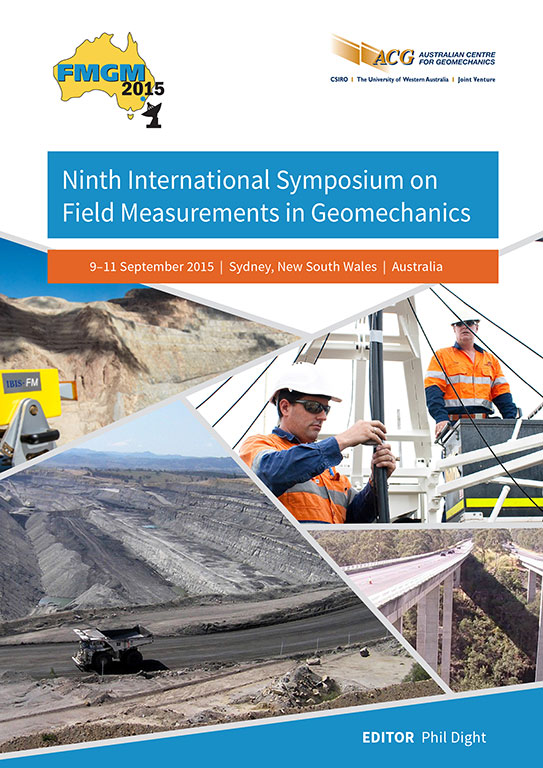Use of monitoring data during construction to refine cavern design

|
Authors: Shen, B; Nash, TR; Bertuzzi, R; Clarke, SJ |
DOI https://doi.org/10.36487/ACG_rep/1508_26_Shen
Cite As:
Shen, B, Nash, TR, Bertuzzi, R & Clarke, SJ 2015, 'Use of monitoring data during construction to refine cavern design', in PM Dight (ed.), FMGM 2015: Proceedings of the Ninth Symposium on Field Measurements in Geomechanics, Australian Centre for Geomechanics, Perth, pp. 397-408, https://doi.org/10.36487/ACG_rep/1508_26_Shen
Abstract:
This paper describes how monitoring data was used during construction to refine the design of a large span cavern built in Ashfield Shale in Sydney. The cavern is part of a rail tunnel project comprising 15.5 km of twin tunnels. The cavern is 160 m in length, with a height of up to 17 m; it spans 23 m, with a cover of between 14 and 17 m. Instrumentation used during construction comprised surface settlement survey, in-tunnel convergence using both survey and tape extensometers, borehole inclinometers, ShapeAccelArray (SAA) inclinometers, multipoint rod extensometers, wire extensometers, endoscopes and vibrating wire piezometers (VWP). Based on the observed ground conditions and monitoring during construction, it was possible to revise rock mass and in situ stress parameters to refine the design. Design changes included increases in advance distances, revised pile lengths and spacing, optimisation of the mesh reinforced arch and a revised excavation profile. These changes resulted in a significant reduction in construction time and a more economical overall project outcome.
References:
Herbert, C & Helby, R 1980, ‘Wianamatta Group and Mittagong Formation’, Department of Mineral Resources, Geological Survey of New South Wales, no. 26, A Guide to the Sydney Basin, Department of Western Government Printer.
Pells, PJN, Mostyn, G & Walker, BF 1998, ‘Foundations on sandstone and shale in the Sydney region’, Australian Geomechanics, vol. 33, no. 3, pp. 17-26.
© Copyright 2025, Australian Centre for Geomechanics (ACG), The University of Western Australia. All rights reserved.
View copyright/legal information
Please direct any queries or error reports to repository-acg@uwa.edu.au
View copyright/legal information
Please direct any queries or error reports to repository-acg@uwa.edu.au